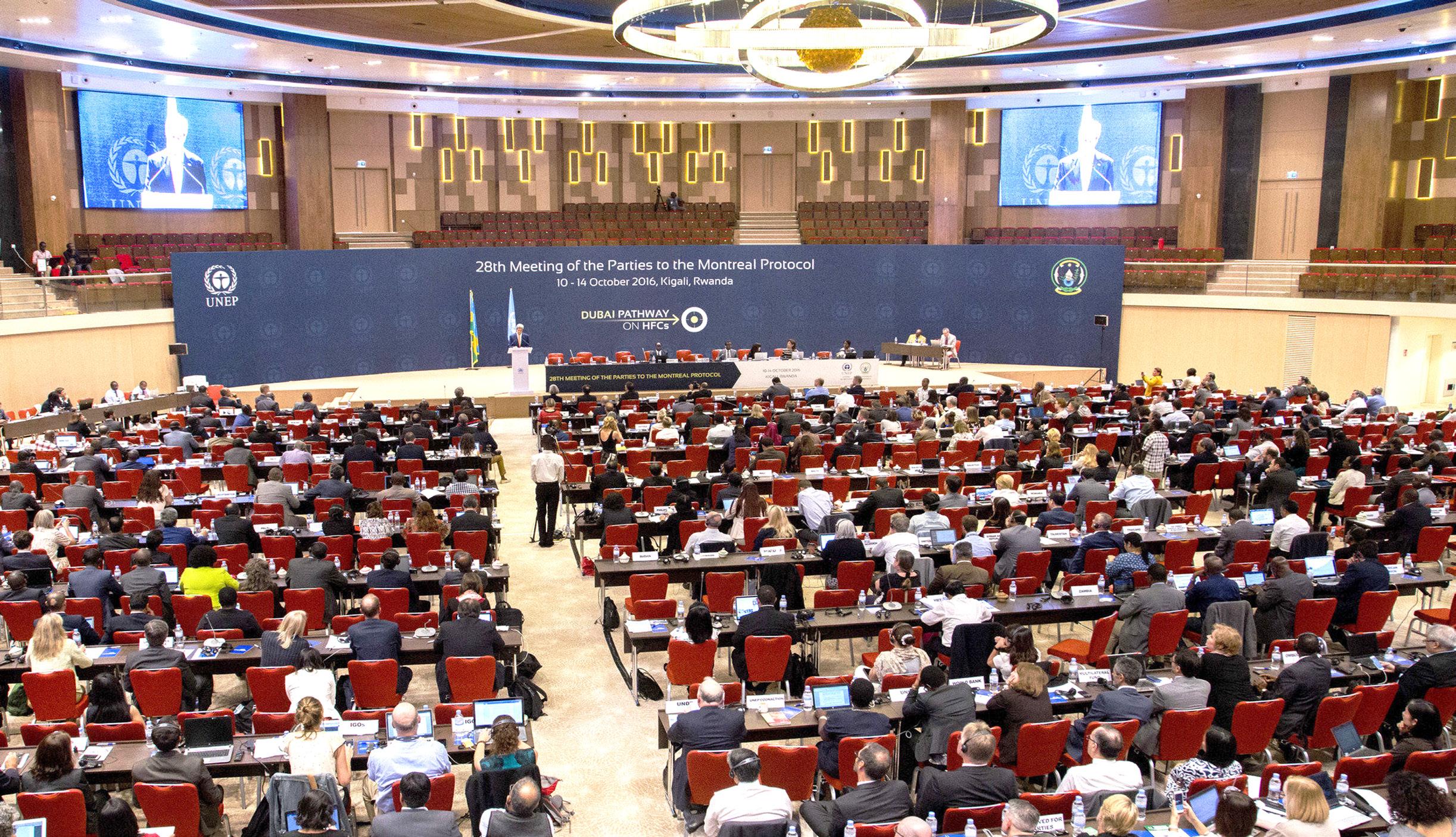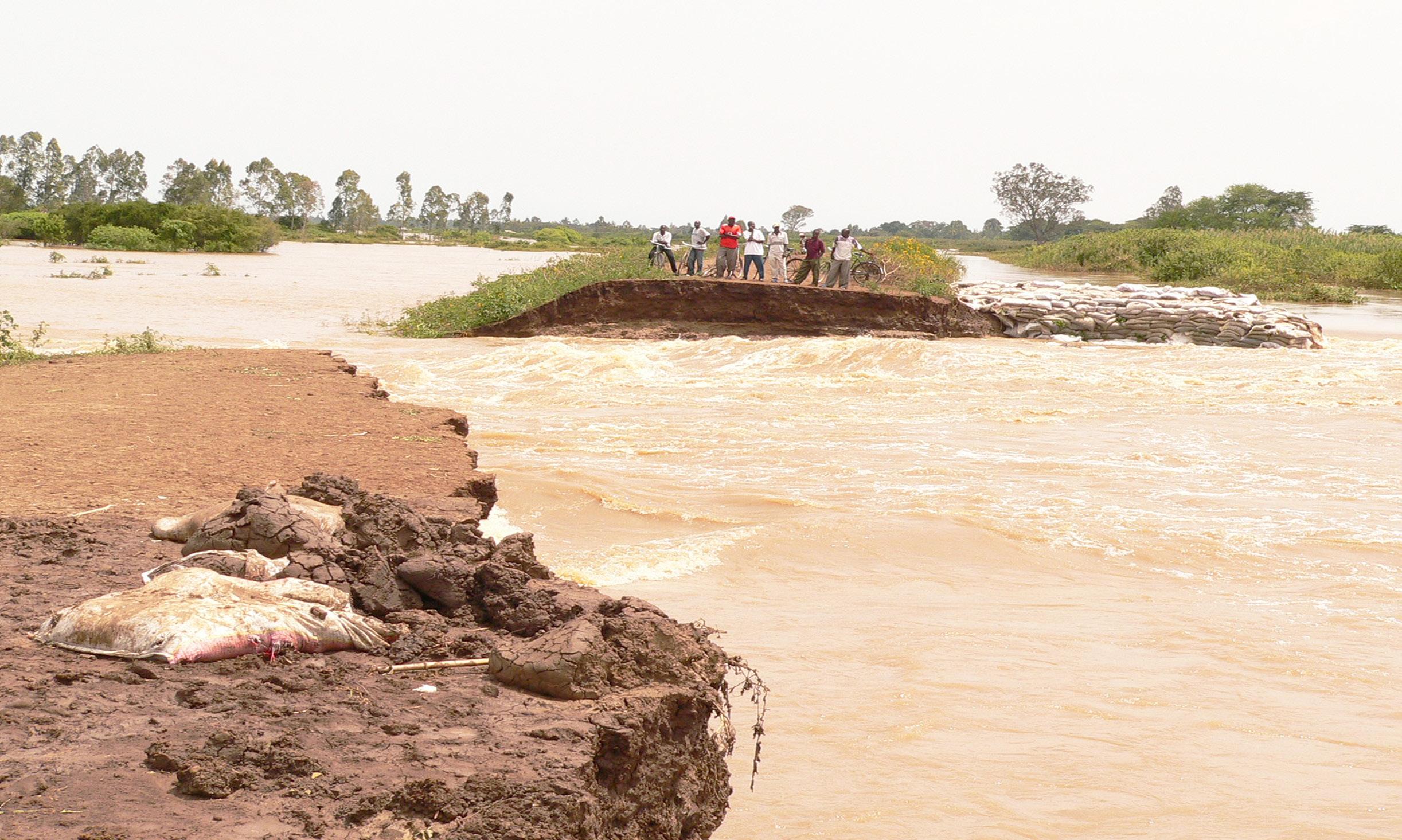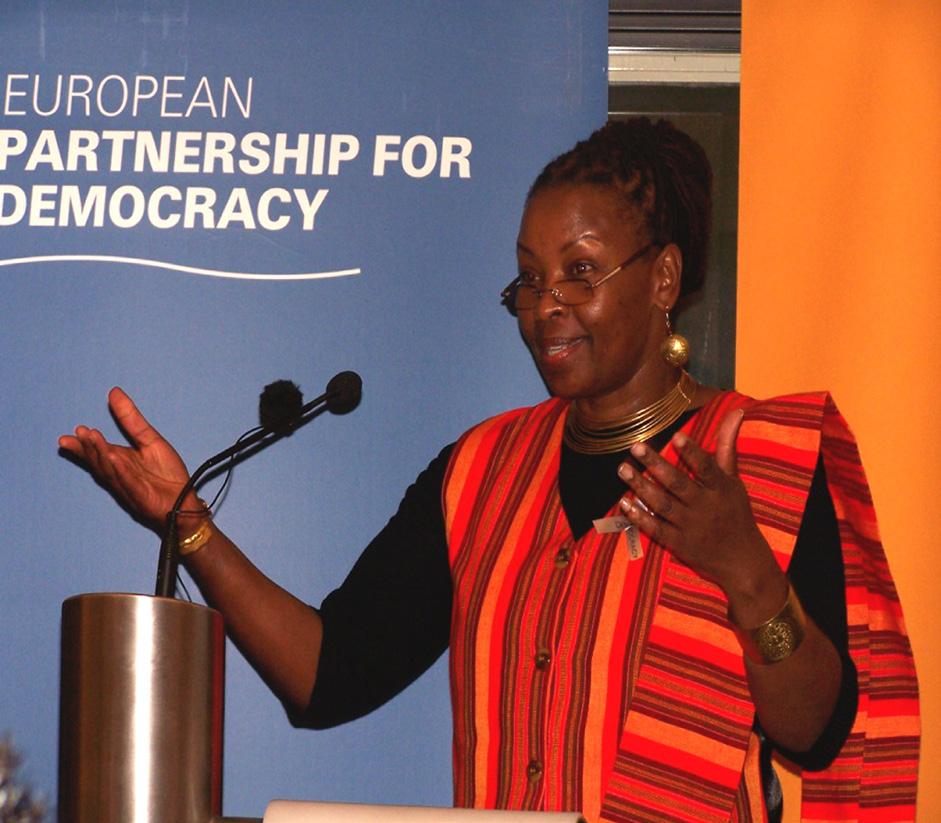
7 minute read
UN Environment Assembly (UNEA): Calls for a life of diginity for all
UN ENVIRONMENT ASSEMBLY (UNEA): Calls for A Life of Dignity for All
Hundreds of environment ministers, decision makers, scientists, civil society representatives and business leaders in June gathered in Nairobi for the inaugural meeting of the United Nations Environment Assembly (UNEA), a new world body that places environmental issues at the heart of international affairs and provides fresh impetus to tackle growing global challenges.
Advertisement
For many, the creation of UNEA is the coming of age of the environment as a world issue, as it places environmental concerns on the same footing with those of peace, security, finance, health and trade for the first time.
Held at the United Nations Environment Programme (UNEP) headquarters under the theme “A Life of Dignity for All”, UNEA is set to tackle major challenges, including the illegal trade in wildlife; air quality and pollution; environmental rule of law; financing the Green Economy; and the Sustainable Development Goals and the Post-2015 Development Agenda, including sustainable consumption and production.
“UNEA marks a milestone in the four decade-long journey to accord environmental issues such as those outlined above the same status as the challenges to peace, security, finance, health and trade,” said former UN Under-Secretary-General and UNEP Executive Director Achim Steiner. “The fact that for the first time all member states of the United Nations will be represented in UNEA means increased legitimacy, representation of all voices across the spectrum of both regional and developmental realities, and empowerment of the Ministers responsible for the environment.”
“We must seize this historic opportunity here in Nairobi - so close to the Rift Valley, the cradle of mankind - to unite the world in its effort to achieve a course correction and shape a new, more sustainable future for humanity, one in which we live in harmony with the natural world and create a life of dignity for all,” he added. During UNEA’s first session, Ms. Oyun Sanjaasuren, Minister of Environment and Green Development of Mongolia, was elected President of the first session of UNEA.
“I stand ready to devote my efforts to ensure that we have an effective and productive session,” she said. The next two years would be critical in achieving progress in sustainable development, climate change
Cont Page 8
The deal binding 197 nations crowns a wave of measures to help fight climate change.
Environmental groups had called for an ambitious agreement on cutting HFCs to limit the damage from the roughly 1.6 billion new air conditioning units expected to come on stream by 2050, reflecting increased demand from an expanding middle class in Asia, Latin America and Africa.
Benson Ireri, a senior policy adviser at aid group Christian Aid, said that all African countries had volunteered for the earlier deadline because they worried about global warming pushing more of their citizens into poverty.
“It was a shame that India and a handful of other countries chose a slower time frame for phasing down HFCs but the bulk of nations, including China, have seen the benefits of going for a quicker reduction. It’s also been encouraging to see small island states and African countries a part of this higher ambition group,” he said in a statement.
A scientific panel advising the signatories to the deal said phasing out HFCs will cost between $4 billion and $6 billion, said Manoj Kumar Singh, India’s joint secretary at the Ministry of Environment, Forest and Climate Change. onwards so there is enough time to plan and mobilize finance,” he told media.
Donors had already put $80 million in a fund to start implementing the agreement, said Gina McCarthy, administrator of the U.S. Environmental Protection Agency.
The HFC talks build on the 1987 Montreal Protocol, which succeeded in phasing out the use of chlorofluorocarbons (CFCs), widely used at that time in refrigeration and aerosols.
The protocol contains provisions for noncompliance, ranging from the provision of technical and financial assistance to trade sanctions in ozone depleting substances, which will be widened to include HFCs.
The original aim of the Montreal Protocol was to stop the depletion of the ozone layer, which shields the planet from ultraviolet rays linked to skin cancer and other conditions.
That effort cost $3.5 billion over 25 years, said Stephen Olivier Andersen, the director of research at Washington-based think tank Institute for Governance and Sustainable Development. Scientists say it prevented 2 million cases of skin cancer.
and other key issues, she stressed, adding: “With our ever-increasing demand for water and resources, we would need another five planets.”
Ms. Judi Wakhungu, Cabinet Secretary of the Environment, Water and Natural Resources of Kenya, said: “the solutions we seek come from every corner, and will require the participation of all states and partners. It is only together, as an international community that we can deal with the world’s everincreasing environmental challenges.”
Ms. Sahle-Work Zewde, Director-General of the United Nations Office at Nairobi, also welcomed all those attending the meeting. “This first-ever UNEA marks an important step in the implementation of the outcome of the United Nations Conference on Sustainable Development [Rio+20],” she said.
Briefly reviewing the history of the United Nations in Kenya, she added: “UNEP remains the pioneer, indeed the heart and soul, of the UN presence here in Kenya.” All 193 UN member states along with major stakeholders are represented at UNEA, which convened from 23-27 June 2014. With this wide reach into the legislative, financial and development arenas, the new body presents a ground-breaking platform for leadership on global environmental policy.
Since UNEP’s inception in 1972, the environment has moved from the margins to the centre of the world’s sustainable development agenda. This reality that was reaffirmed by world leaders at Rio+20 in June 2012 - held 20 years after the ground-breaking 1992 Earth summit - when they supported the strengthening and upgrading of UNEP, translating into universal membership for its new governing body, UNEA; increased resources; and improved mechanisms to engage civil society and other stakeholders.
This first session of UNEA will determine its relevance in the international setting and will define UNEP’s ability to address the greatest environmental challenges which face us today, and in the future. At UNEA, Ministers had the opportunity to exchange views on and provide inputs to the definition of the post-2015 development agenda, thus ensuring that environmental concerns are reflected and integrated into the post-2015/ Sustainable Development Goals framework.
During UNEA, UNEP launched a new report on South-South Trade and the Green Economy, which explores the growing movement of development “for the South, by the South” through an environmental lens. In addition, a strategic paper on Sustainable Consumption and Production Indicators was presented, providing tools for governments seeking to chart a more sustainable course in their countries’ consumption and production patterns.
At this meeting, Ministers also had an opportunity to address the illegal trade in wildlife, currently emerging as one of the most serious global concerns. A joint UNEP-INTERPOL Rapid Response Report was launched, highlighting the links between environmental crime, insecurity and threats to sustainable development. The perverse effects of these criminal activities are being dramatically witnessed also in Kenya and throughout Africa, where the existing populations of elephants and rhinos are been killed for their ivory, thus posing a threat not only to the survival of these species in the wild, but also to the livelihoods of local communities and the development ambitions of the continent.
Other significant events at UNEA included the signing of a new Memorandum of Understanding between UNEP and the European Commission; the launch of the 10-year edition of the UNEP Yearbook 2014, which reviews a decade of key and emerging environmental issues; and the launch of the 2014 World Investment Report, the annual flagship publication of the United Nations Conference on Trade and Development.
At a Global Symposium on Environmental Rule of Law, Chief Justices and Attorneys General, Auditors General, Government representatives and representatives from key civil society organizations discussed the ways and means by which the further development and implementation of environmental rule of law can help ensure just and sustainable development outcomes. Similarly, a Symposium on Financing Green Economy brought together professionals of the finance sector, policy makers, and environmental economists to examine the relationship between capital markets and a Green Economy and to identify opportunities for mobilizing finance for sustainable investments.
In addition, a press conference was held on the state of the world’s oceans with the participation of Prince Albert of Monaco and José Maria Figueres, Co-Chair of the Global Ocean Commission and former president of Costa Rica.
Representatives of media outlets from around the globe attended UNEA, bringing the meeting’s high-level discussions to the public at large. They took part in media roundtables on a number of issues, ranging from environment and the rule of law to Small Island Developing States and the Green Economy, to plastics in the ocean.
Source:http://www.unep.org/newscentre/ Default.aspx?DocumentID=2791&ArticleI D=10902&l=en#sthash.9oHo8wFJ.dpuf







